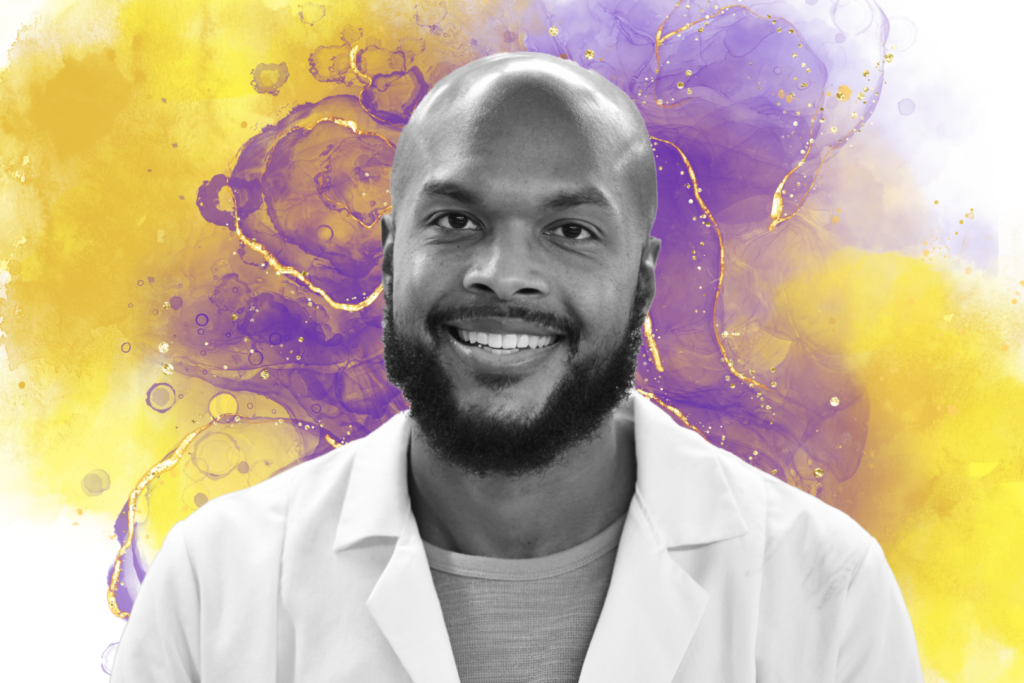PRAIRIE VIEW, Texas (Nov. 27, 2023) – Prairie View A&M University Assistant Professor of Chemistry Matthew Minus, Ph.D., was first drawn to the sciences by his curiosity.
He always enjoyed building things, so he was intrigued when he learned during his sophomore year in organic chemistry that you could build molecules into drugs. “I knew I wanted to learn how to do that,” he said. “I always wanted to know what everything was made of and how/why things worked. I think that natural curiosity attracted me to the natural sciences.”
Dr. Minus attended Texas Southern University as a chemistry major while playing football, intending to become a pharmacist. While working as a pharmacy technician in his senior year, Minus realized he was more interested in the pharmaceutical manufacturing of drugs rather than distribution. So, he taught and coached at J. Frank Dobie High School as he prepared for graduate school. He was accepted into Rice University’s chemistry graduate program in 2011.
Fast forward to today, Minus holds both a master’s and Ph.D. in chemistry from Rice and teaches various chemistry classes at PVAMU, including organic chemistry and cosmetic chemistry. “As an HBCU graduate, I wanted to work in an environment that was focused on developing the next generation of minority undergraduates,” Minus said.
As a professor, Minus tries to help his students understand the fundamental principles that govern the world, like the law of gravity. “Understanding the fundamental laws of the universe and how to apply them enables students to accomplish their goals and dreams later on in life,” he said. His goal for his students is to be able to take what they learned in his class and apply it in their lives, in the real world.
Minus appreciates chemistry because it has so many real-world translations, from life-saving drugs to even climate change.
“Chemistry is the study of what matter is and how it interacts,” Minus said. “Chemistry is all around us, happening all the time with everything.” He added, “Understanding chemistry can save lives, delay aging, make the next futuristic materials, and solve many of the problems of the modern world.”
The National Science Foundation this summer awarded $199,829 to a team of PVAMU researchers, including Minus, and collaborators at the Center for Interfacial Ionics (CI2).
Minus and fellow Assistant Professor of Chemistry Marco Giles, Ph.D., both members of the CI2’s STEM diversity pipeline team, are leading the NSF-funded project focused on interfacial ion transport, which is important to understand at the fundamental level of chemistry to develop battery technologies.
“Imagine cell phones that could go months without charging,” Minus said. “Imagine electric cars that can recharge in minutes and drive for days. Imagine whole cities running on a battery the size of a car.” He says the goal of the collaboration – between PVAMU and six other institutions, including Stanford University, is “to make a breakthrough in the fundamental research that could enable the realization of all these possibilities.”
The project has global implications. “This NSF-sponsored, collaborative project not only fosters the research and advancement of battery technology, which plays an integral role in the global energy transition, but will also enrich the electrochemical research skills and knowledge of our undergraduate students,” said Magesh Rajan, PVAMU vice president of Research & Innovation.
Chemistry is also integral to the world’s transition to clean energy and a greener future.
“In a world of green and clean energy that must be stored and used to power electric cars, cities, and other technology, the production of more advanced battery systems is critical,” Minus said. “Therefore, understanding and catalyzing interfacial ion transfer is critical for the advancement of society.”
He added, “By understanding and manipulating the chemistry around us, we have the ability to make that which was previously impossible possible.”
By Christine Won
-PVAMU-

